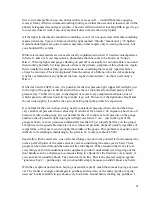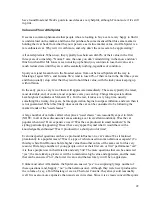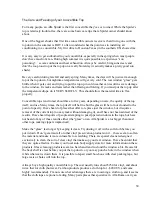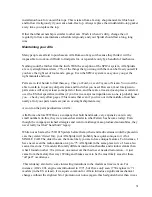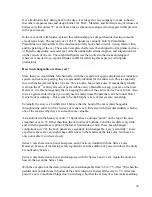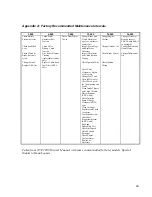
34
younger than 25) with an insurance payment noticeably greater than the payment for the car
itself.
The good news for Alfa owners of all types is that Alfas are considered
”
good
„
cars by most
insurance companies.
”
Good
„
in that they are usually owned by adults, driven rationally (or
rather, driven well), and tend not to be stolen all that much. The bad news is that since they are
rare, they tend to be hard to find body parts for.
There is also the problem of the way the entire 105 series was designed. Alfa has always
engineered their automobiles as if they were race cars. This extends not only to the engine and
suspension, but to the design of the body and layout of the interior as well. And, in a race car, one
is not very concerned about what will happen to the body of the car during an accident. Rather,
one is very much concerned about what will happen to the driver, and if designing the car to
crush itself rather than the driver will increase his or her chance of survival, so be it.
This goes a long way to explaining why all of the 105 series have such long overhangs
(especially the Spiders) and ridiculous bumpers. The former is the result of careful design
considerations toward crumple zones and areas of energy absorption, while the latter is the
disdain of (to a race car engineer, at least) the unimportant. The bottom line is that the entire
105/115 series are probably some of the safest cars of their era, certainly as safe as contemporary
Volvos, and inarguably a heck of a lot more fun to drive.
Unfortunately this means that when an Alfa gets in an accident, it really GETS IN AN
ACCIDENT. Both the front and rear zones of the car are meant to destroy themselves in an
impact of any real force. Where other car makers designed the seats and seat restraint systems to
help absorb the impact of a collision and thereby reduce overall damage to the car (if they
considered designing any sort of safety features into their cars at all
many didn
“
t), Alfa
designed the entire CAR to absorb the impact, thereby reducing damage to the driver. Ultimately
this means that, in any given accident, an Alfa Spider will almost always come out more
damaged than the initial impact would at first indicate, and this damage will subsequently be
more difficult (and more expensive) to repair.
Nowadays there
“
s no such thing as an owner of a
”
new
„
Alfa Spider in the US. Even the last
models manufactured are now several years old. Insurance companies as a whole are not used to
dealing with used sports cars. Further, they very, very seldom account for regular maintenance or
general condition of a car. As a whole the insurance industry is a large, downright paranoid
bureaucracy that likes well-established, insurance industry-maintained tables of value for all the
different cars of the world, with fixed rates of depreciation that in no way account for market
changes. If any square pegs are presented that don
“
t fit these round holes, they are usually
hammered away at until they fit, regardless of what this means for the client or the vehicle.
So what is a potential Alfisti to do? DOCUMENT **EVERYTHING**. When you purchase the
car, take dozens of pictures of it
all angles, underside, engine compartment, interior, close-ups
of every individual body panel. Update these pictures at least once a year. Make a videotape of
you showing every angle of the car, the condition of the engine, etc. If possible, get a notary


